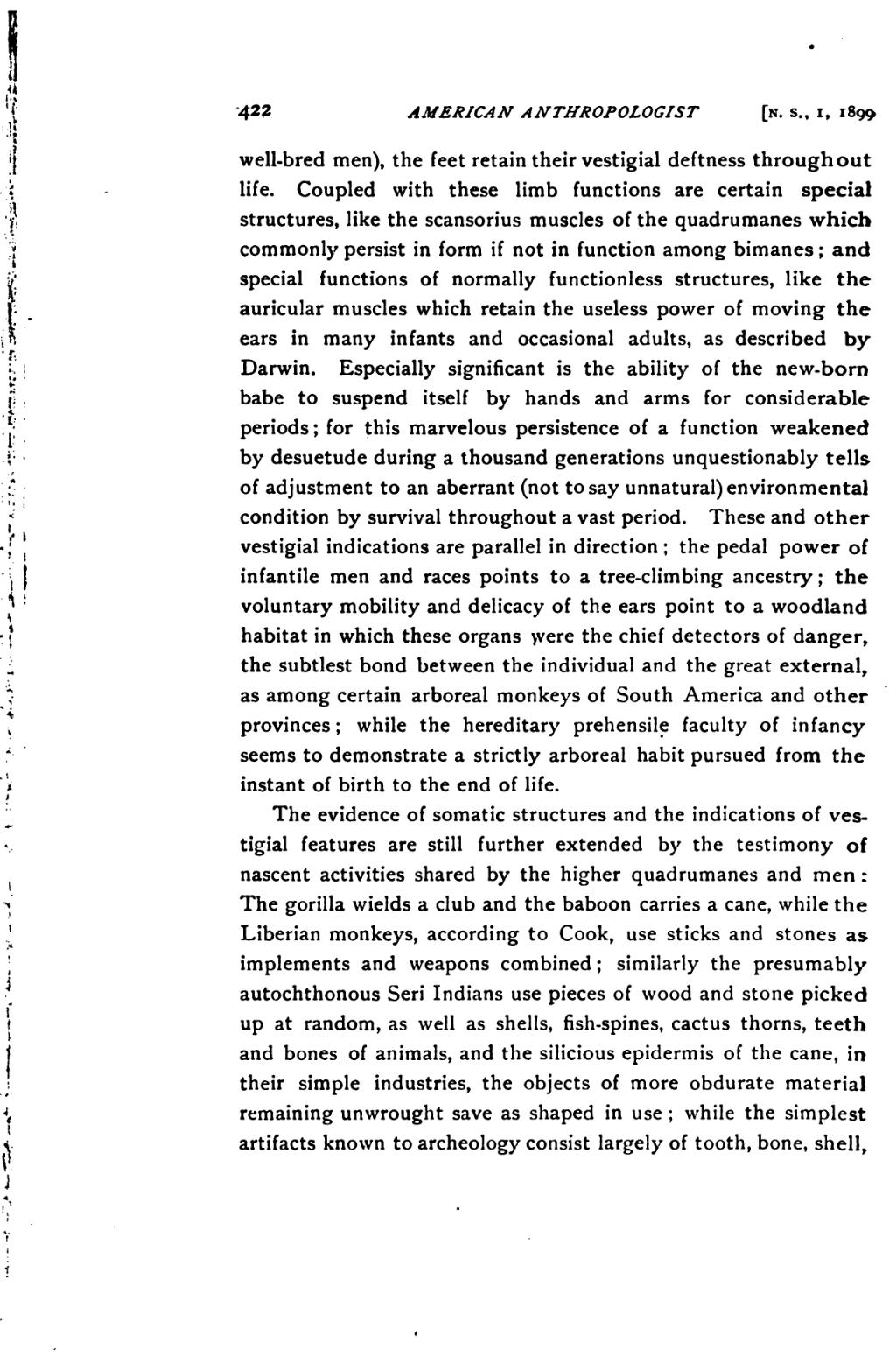^
��r
- •.
i, ! • • •
�� ��423 AMERICAN ANTHROPOLOGIST [n. s„ i, 1899
well-bred men), the feet retain their vestigial deftness throughout life. Coupled with these limb functions are certain special structures, like the scansorius muscles of the quadrumanes which commonly persist in form if not in function among bimanes ; and special functions of normally functionless structures, like the auricular muscles which retain the useless power of moving the ears in many infants and occasional adults, as described by- Darwin. Especially significant is the ability of the new-born babe to suspend itself by hands and arms for considerable periods; for this marvelous persistence of a function weakened by desuetude during a thousand generations unquestionably tells of adjustment to an aberrant (not to say unnatural) environmental condition by survival throughout a vast period. These and other vestigial indications are parallel in direction ; the pedal power of infantile men and races points to a tree-climbing ancestry ; the voluntary mobility and delicacy of the ears point to a woodland habitat in which these organs yvere the chief detectors of danger, the subtlest bond between the individual and the great external, as among certain arboreal monkeys of South America and other provinces; while the hereditary prehensile faculty of infancy seems to demonstrate a strictly arboreal habit pursued from the instant of birth to the end of life.
The evidence of somatic structures and the indications of ves- tigial features are still further extended by the testimony of nascent activities shared by the higher quadrumanes and men : The gorilla wields a club and the baboon carries a cane, while the Liberian monkeys, according to Cook, use sticks and stones as implements and weapons combined ; similarly the presumably autochthonous Seri Indians use pieces of wood and stone picked up at random, as well as shells, fish-spines, cactus thorns, teeth and bones of animals, and the silicious epidermis of the cane, in their simple industries, the objects of more obdurate material remaining unwrought save as shaped in use ; while the simplest artifacts known to archeology consist largely of tooth, bone, shell,
�� �
